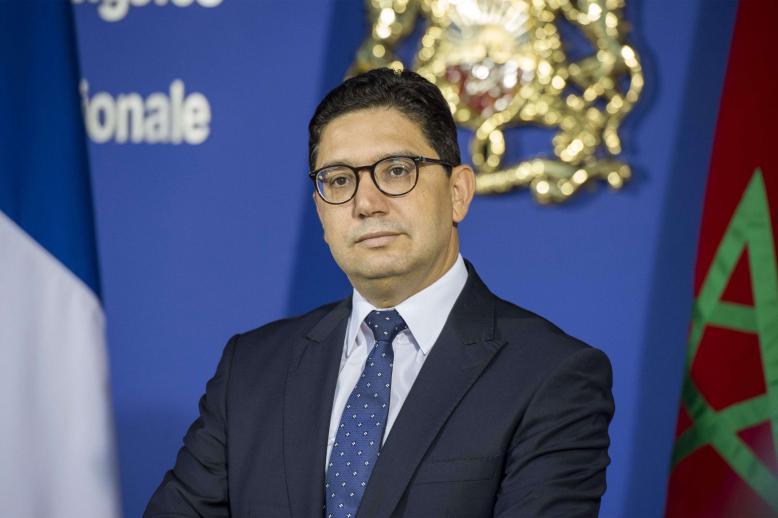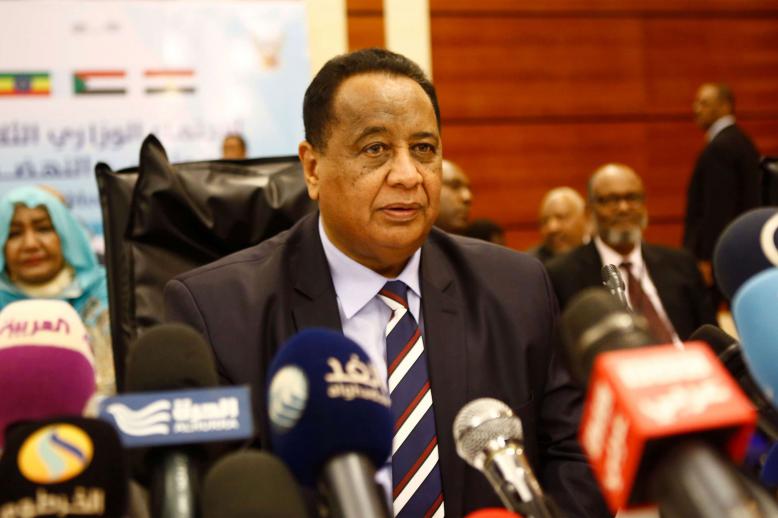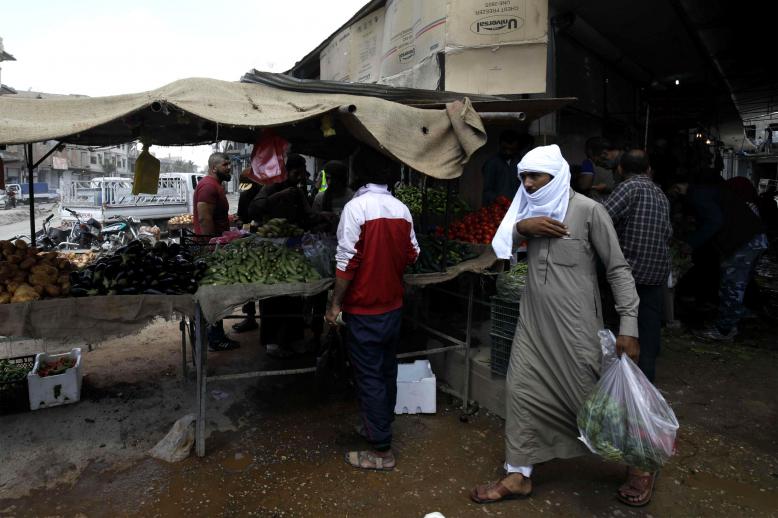World heritage in Syria and Libya agonising under the world’s idle eyes

In parallel to the destructive conflicts plaguing countries of the Middle East, another war is being waged on the collective memory of the people in the region and their historic identity.
From Iraq to Syria, Yemen and Libya, the region’s cultural and archaeological heritage is being wiped out amid the appalling idleness of the international community and UNESCO, archaeology experts complained.
Grievances about the disappearing heritage of the region, considered the cradle of ancient civilisations, were voiced at a forum on the role of media in the protection of cultural heritage organised by local NGOs and the Swedish Cultural Institute in Alexandria, Egypt.
Military bases set up in the perimeter of archaeological sites, bombardment of museums and historical monuments, illegal excavations, plundering, looting and illicit trafficking of artefacts is what Syria’s heritage has been exposed to for seven years, said Syrian archaeologist Cheikhmous Ali, founder of the Strasbourg-based Association for the Protection of Syrian Archaeology (APSA).
“[The Islamic State (ISIS)] was not the only armed group plundering sites in Syria,” Ali said. “All military parties active on Syrian soil are involved. The Syrian regime, the opposition groups, the US forces, the Russians, the Turks, the Iranians and their allies. They are all taking part in the destruction of Syria’s heritage.”
While temples and shrines have been dynamited by jihadists for ideological reasons, bulldozers were used by the army and opposition fighters to build roads, erect barricades and dig tunnels in sites with strategic locations.
“We have satellite images showing Syrian troops positioned inside Palmyra and bulldozers levelling the ground and digging tunnels in the ancient site area, thus removing non-excavated archaeological layers and probably burying forever part of the history of this site listed as a UNESCO World Heritage,” said Ali, whose association has been recording the plundering and destruction of historic sites and monuments in Syria since the outbreak of the conflict in 2011.
Ali said at least 30% of Syria’s archaeological sites and historic buildings have been damaged, including some destroyed, and 10,000-12,000 artefacts have been looted.
“Reports circulated in the official media claiming that 95% of Syria’s antiquities are safe are totally incorrect. We have 38 museums in Syria, many of which have been damaged and looted,” he said.
“For instance, only 2-3% of the collection in Raqqa museum remains, implying that all the antiquities discovered in the province between 1982 and 2011 have disappeared. In Idlib museum, 30% of the collection, including 17,000 cuneiform tablets discovered on the archaeological site of Ebla, a kingdom from 3000BC, were stolen. Syria’s best-known mosaics museum in Maraat Al-Naaman suffered serious damage in regime barrel bomb attacks, causing the total destruction of six mosaics. Homs museum, which was on the front line, was bombed and its doors remained open for more than a year during which some 100 antiquities were looted. Palmyra museum was openly vandalised and destroyed by [ISIS] and the gold-plated statue of an Aramean god that dates to 800BC was stolen from Hama museum in 2011 when the city was under regime control.
“Only recently we were informed that the warehouses of Aleppo museum, the most important in Syria, were inundated and all its valuable pieces are now soaking in water,” Ali said.
In addition to the plundering of museums, vandalism and illegal excavations of famous archaeological sites such as Apamea, Ebla, Palmyra, Dura-Europos continue without deterrence.
Ali said excavations are carried out in broad daylight by jobless locals and antiquities’ traffickers with the permission of the armed groups, including the regular army, in return for bribes.
Thumbnail
Though it existed before the outbreak of the revolution, the illicit activity increased considerably afterward. Artefacts that are smuggled to neighbouring countries, including Turkey, Lebanon, Jordan and Israel, end up on the black market in Europe, the United States or the Gulf.
“Some pieces intercepted in Lebanon were returned to Syria, while others taken in Jordan and Turkey would be returned at the end of the conflict,” Ali said. “We do not know the exact quantity of looted artefacts because many are not registered and documented.
“The important pieces will be concealed and won’t resurface before 10-15 years. They will be given new identities and certificates to allow selling them at international auction houses.”
The internet gives looters anonymity and direct access to buyers without the burden of proof of origin or legal documents. Antiquities’ trafficking was rarely in the public eye until the world witnessed ISIS’s deliberate destruction of ancient heritage sites in Syria and Iraq.
The International Council of Museums (ICOM) published an “Emergency Red List of Syrian Cultural Objects at Risk” that could turn up on the international art market. It provides a guide for customs officials, police forces, art dealers and museums to identify looted antiquities.
Ali complained of “inadequate support” from international organisations, especially UNESCO, in preserving Syria’s heritage, including many World Heritage sites. Ali’s teams of volunteers in the field include archaeologists, journalists and regular citizens who document damage, inspect sites and take photos and videos.
“Tens of meetings and discussions were held but nothing concrete happened on the ground. No financial or logistic support given to the activists in the field. UNESCO organised several workshops for them but this won’t help resolve such a catastrophe. It is useless to teach people how to extinguish a fire in a museum when you don’t have the equipment to do it,” Ali said.
“I believe it is too late to salvage Syria’s heritage. Destruction continues, people are being killed and heritage is not a priority.
“The heritage in Syria is a world heritage. It is the collective memory of humanity which is at stake, and thus it is a collective responsibility to preserve it,” he added.
Libya, like Syria, is home to a prized array of temples, tombs, mosques and churches, including five UNESCO World Heritage sites and, like Syria, it is racked by a complex civil war that puts at high risk its cultural and historic heritage, drawing widely from Christian and Islamic history, the Greek and Roman eras, as well as the desert dynasties that overlapped them.
The precarious state of Libya’s heritage was highlighted in a documentary, “War on Memory,” presented at the Alexandria meeting by the Libyan Women’s Platform for Peace (LWPP).
LWPP co-founder Zahra’ Langhi described “War on Memory” as “a wake-up call.”
“One of the lethal weapons used to annihilate nations and states is deforming consciousness, dissolving collective memory, destroying symbols that express the character of a nation and severing the bonds between contemporary generations and their forefathers through the ages,” Langhi said.
“This is achieved by destroying the national and religious heritage that contributes to the revival of memory, the strengthening of identity, the embodiment of symbols and the continuity of generations.”
Endangered sites in Libya include Cyrene, founded about 630BC by the Greeks; Leptis Magna, once part of the Phoenician city-state of Carthage, later incorporated by the Romans into the province of Africa; Sabratha, west of modern Tripoli, a Phoenician trading post; the old town of Ghadames, known as the “pearl of the desert”; and the Acacus Mountains, which host prehistoric rock paintings, some dating to 12,000BC.
The depressing plight of Libya’s antiquities is not new, said Khadija Ramadan, a Benghazi-based journalist and LWPP activist. “Under (late dictator Muammar) Qaddafi, Libyan historic vestiges were neglected. Classical towns such as Sabratha, Cyrene and Leptis Magna were viewed negatively as links to a colonialist past,” Ramadan said.
After Qaddafi’s toppling in 2011, there were hopes for a new era in archaeological exploration but the absence of law and order facilitated looting, vandalism and construction on previously protected sites. Vandalism of the Acacus rock paintings increased. Armed looters stole tiles and marbles from Tripoli’s fabled Karamanli mosque, built in 1738, and Islamist extremists desecrated shrines built by Sufi Muslims.
However, the most dangerous threat facing heritage in Libya is urban encroachment, land grabs and the trafficking of archaeological materials for profit or to fund radical groups, Ramadan said, noting that sites in populated areas are particularly at risk.
While damage to cultural heritage has been recorded in Syria, keeping track of Libya’s treasures is virtually impossible because it has become so dangerous there since Qaddafi’s fall.
ICOM’s “Emergency Red List of Libyan Cultural Objects at Risk” is the 15th in its Red List series. Though not exhaustive, the list includes vulnerable artefacts such as rock art, figurines and sculptures in stone, metal and ceramic, glass and semi-precious stones, coins and accessories such as lamps and jewellery.
While the international body said it had not registered large-scale destruction in Libya “aimed at clearing all signs of the past,” it had recorded theft, pillaging and destruction of Sufi mosques around Tripoli.
“Libya is in big danger of losing a huge part of its cultural heritage. Unfortunately, it is difficult to defend it and the loss would be irreplaceable,” Ramadan said.
Samar Kadi is the Arab Weekly society and travel section editor.
This article was originally published in The Arab Weekly.




